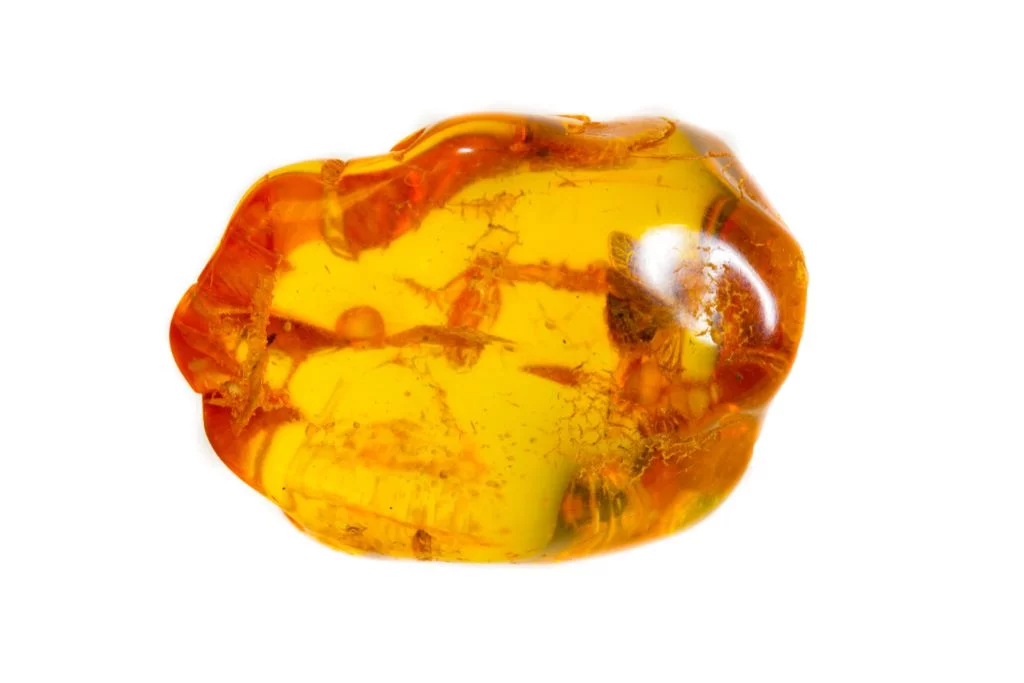Color Variations of Baltic Amber
Baltic Amber displays a rich spectrum of colors, ranging from pale yellow to deep orange and reddish-brown. The most common hue is a warm honey color, but it can also appear in shades of butterscotch, cognac, and even green or blue in rare instances. The color variations are primarily influenced by the specific environmental conditions during the amber’s formation process.
Structure and Composition
This fossilized tree resin possesses a unique structure characterized by its amorphous nature. Unlike crystalline minerals, Baltic Amber lacks a defined internal structure, resulting in a smooth, organic feel. It is composed primarily of carbon, hydrogen, and oxygen, with trace amounts of sulfur. The resin’s fossilization process, which occurs over millions of years, contributes to its durability and distinct properties.
Notable Physical Characteristics
Baltic Amber is renowned for its lightweight nature, often floating in saltwater due to its low density. It exhibits a warm-to-touch sensation and becomes electrically charged when rubbed, a property known as triboelectricity. This characteristic is the origin of the term “electron,” derived from the Greek word for amber. The surface of Baltic Amber can range from smooth and polished to rough and weathered, depending on its exposure to natural elements.
Unique Features
One of the most captivating aspects of Baltic Amber is its ability to preserve ancient life forms. Inclusions of insects, plant matter, and even small vertebrates can be found trapped within the amber, providing a fascinating glimpse into prehistoric ecosystems. These inclusions not only add to the aesthetic appeal but also serve as valuable scientific specimens. Additionally, Baltic Amber often contains bubbles, which can create stunning visual effects when light passes through the stone.
Historical and Cultural Significance of Baltic Amber
Baltic amber has been prized for thousands of years, with archaeological evidence suggesting its use in jewelry and trade as far back as 13,000 years ago. Ancient civilizations, including the Romans, Greeks, and Egyptians, valued amber for its beauty and believed protective properties. The famous Amber Road trade route connected Northern Europe to the Mediterranean, facilitating the exchange of this golden fossilized resin.
Metaphysical Associations
In metaphysical circles, Baltic amber is often associated with the sun and its energies. It is believed to promote clarity of mind, patience, and wisdom. Many practitioners consider amber a powerful cleanser of negative energies, both in the environment and within the body. Some also attribute to it the ability to enhance memory and decision-making skills.
Traditional and Modern Applications
Traditionally, Baltic amber has been used in folk medicine, particularly in Northern Europe. Amber teething necklaces for infants remain popular in many cultures, believed to reduce pain and inflammation. In modern times, amber is widely used in jewelry and decorative arts. Some alternative health practitioners incorporate amber in massage therapy or create amber-infused oils for topical application.
Perceived Benefits
Proponents of amber therapy claim numerous benefits, including pain relief, improved immune function, and reduced inflammation. The succinic acid found in amber is thought to have analgesic properties when absorbed through the skin. Some users report relief from arthritis symptoms, headaches, and respiratory issues. While scientific evidence is limited, many people continue to seek out Baltic amber for its potential therapeutic effects and natural beauty.

